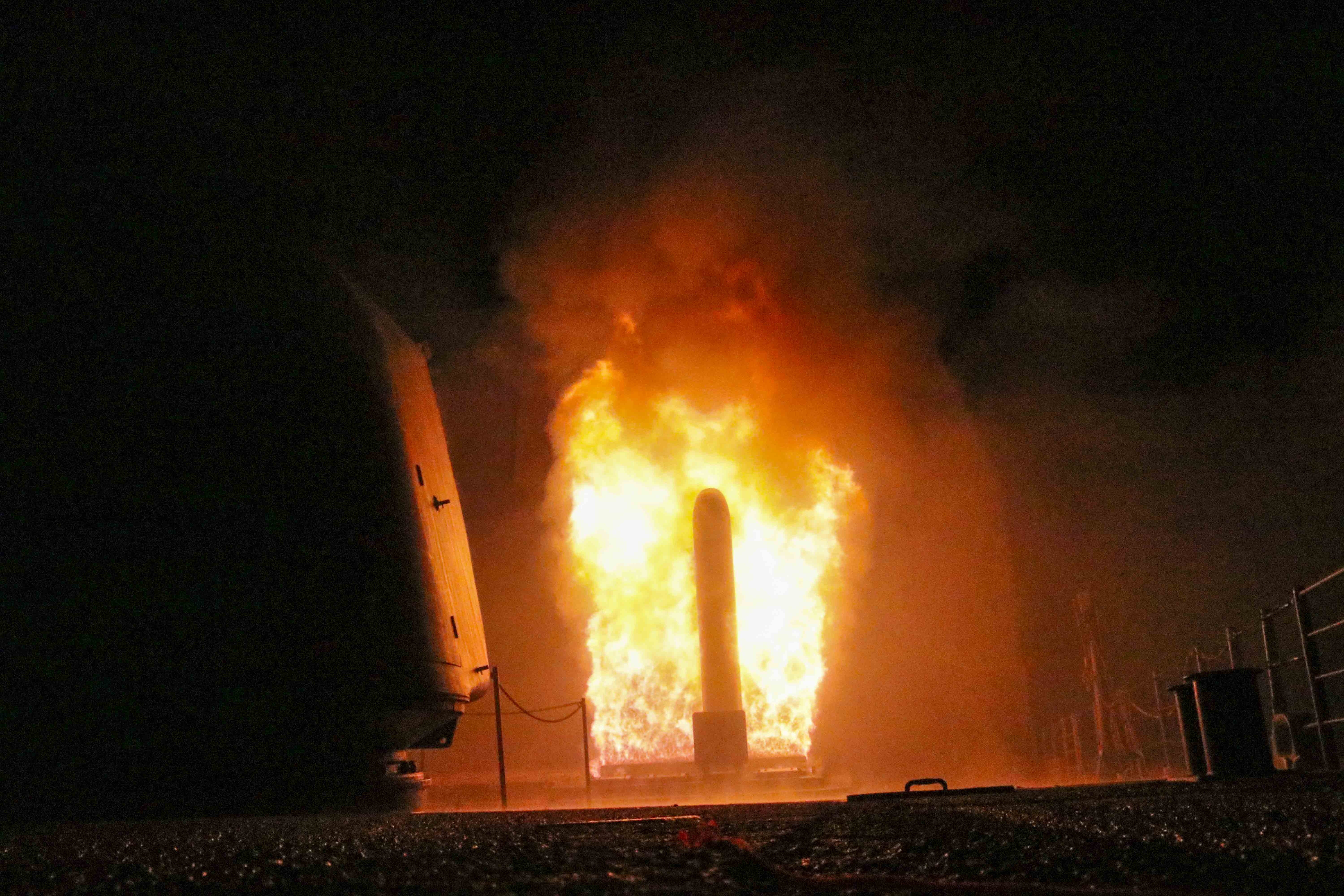
Japan’s Ministry of Defense (MOD) announced on Thursday that it had signed a letter of offer and acceptance for the acquisition of Tomahawk cruise missiles and related equipment with the U.S. government under a foreign military sales (FMS) agreement. On the same day, the MOD also disclosed it had signed a contract in October last year for additional Joint Strike Missiles (JSM).
The release stated that the MOD and Self Defense Forces (SDF) will be strengthening stand-off defense capabilities to disrupt and defeat forces that may invade Japan early and from far away. To swiftly build this capability, MOD and SDF are working toward the prompt procurement of indigenous stand-off missiles and, to complement them, decided to procure the Tomahawk cruise missile one year sooner than previously planned.
The signing was witnessed by Japan Defense Minister Minoru Kihara and U.S. Ambassador Rahm Emanuel, along with military and civilian officers from both countries.
The acquisition contract is for 200 Block IV Tomahawks, 200 Block V Tomahawks and 14 Tactical Tomahawk Weapon Control Systems, along with support, training, maintenance, spares and other ancillary services and items. A DSCA release in November puts the estimated acquisition cost at $2.35 billion. Japan’s MOD stated that acquisition will occur between the Japanese fiscal years (FYs) 2025 and 2027. The Japanese government’s fiscal year is from Apr. 1 to Mar. 31.
Japan originally scheduled a buy of 400 Block V Tomahawks with deliveries beginning in FY2026. But, in October last year during his visit to the Pentagon, Kihara announced that Japan would move up the schedule by one year because of the increasingly severe security environment and also would change the procurement to a mix of Block IVs and Vs to accommodate the revised schedule. Japan plans to install the Tomahawks on its eight Aegis destroyers: four Kongō class, two Atago class and two Maya class, and on the two new Aegis system-equipped vessels destroyers to be commissioned in 2027 and 2028.
The Japanese government has been pursuing improved stand-off missile capabilities under the strategy laid out by its National Security Strategy (NSS), the National Defense Strategy (NDS), and Defense Buildup Program that was released at the end of 2022. Acquisition of stand-off weapons would allow Japan to counter invasions of its various islands from a distance and, at the same time, long-range missiles such as the Tomahawks would allow Japan to carry out attacks against hostile territories under its counterattack capability doctrine.
Also in October, the Japan MOD concluded FY2023’s buy of the JSM from Kongsberg Defense & Aerospace Ltd., with delivery to be carried out in FY2026. The MOD stated that it has been conducting annual procurement of the JSMs since FY2018 and had allocated 35.2 billion yen (USD $237.8 million) for FY2024’s procurement. The JSMs are to be carried by Japan’s F-35A Lightning II fleet.
Earlier on Tuesday, Japan’s Joint Staff Office issued a release stating that at 7 a.m. that day People’s Liberation Army Navy (PLAN) destroyer CNS Zhengzhou (151) and frigate CNS Changzhou (549) had been sighted sailing southeast in an area 80 miles northeast of Miyako Island, and subsequently transited the Miyako Strait into the Pacific while shadowed by Japan Maritime Self Defense Force (JMSDF) fleet oiler JS Towada (AOE-422).





